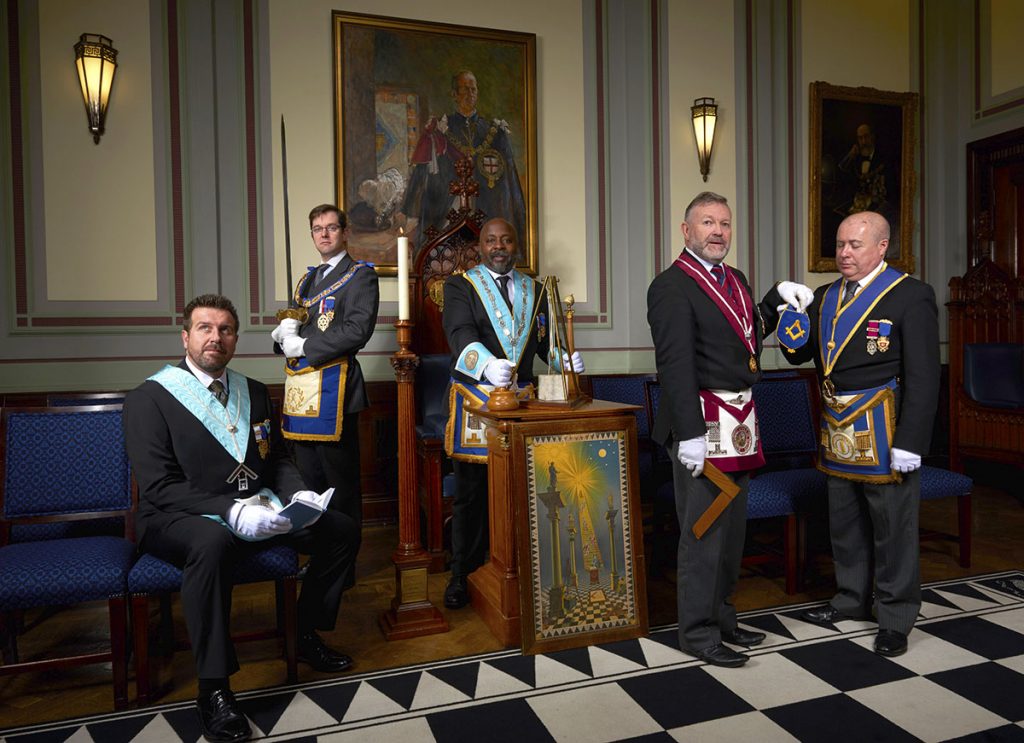Revealing the Key Benefit of Joining Freemason for Lifelong Connections
Revealing the Key Benefit of Joining Freemason for Lifelong Connections
Blog Article
Exploring the Mysteries of the Freemason: What You Need to Know
The Freemason, a term usually shrouded in intrigue and debate, represents an intricate tapestry of historical truth and contemporary myth. Established in the late 18th century, this secret society was initially rooted in the Enlightenment's ideals yet has actually given that come to be synonymous with conspiracy concepts about elite control. As we browse the beginnings, crucial numbers, and the raw comparison in between myth and fact, one must think about how these narratives affect contemporary understandings of power and privacy. What could be revealed through a better exam of these components might test long-held assumptions about the shadows that linger in our society.
Beginnings of the Freemason
The origins of the Freemason are steeped in a blend of historic intrigue and ideological fervor. Established in 1776 in Ingolstadt, Bavaria, by Adam Weishaupt, the team was originally developed as a secret culture intended at advertising Enlightenment perfects such as reason, secularism, and the separation of church and state. Weishaupt, a teacher of canon regulation, sought to test the dominating authority of the church and state, which he viewed as overbearing institutions stifling intellectual and personal freedom.
The Freemason looked for to hire significant participants from numerous societal industries, including national politics, academic community, and the arts, to cultivate a network devoted to these Enlightenment principles. The culture operated under a shroud of privacy, utilizing coded language and routines to secure its participants from mistreatment, specifically offered the repressive environment of the moment. The Freemason encountered considerable opposition from both governmental authorities and religious institutions, which viewed the team as a hazard to their power.
Trick Numbers and Members
Who were the pivotal numbers that formed the Freemason's early influence and instructions? The Bavarian Freemason, started in 1776 by Adam Weishaupt, arised as an action to the oppressive social frameworks of the time. how to become a freemason. Weishaupt, a law teacher, imagined the organization as a means to advertise Knowledge suitables such as reason, secularism, and equal rights. His preliminary recruitment initiatives included influential pundits, such as Baron von Knigge, who played a critical function in expanding the team's membership and business structure.
One more considerable figure was Johann Gottlieb Fichte, a popular philosopher whose ideas on nationalism and education and learning resonated with the Freemason's objectives. Although Fichte was not a formal participant, his philosophical supports influenced the team's ideology. In addition, figures like the author and thinker Johann Wolfgang von Goethe were connected with the more comprehensive intellectual movements of the moment, although their straight involvement with the Freemason stays questioned.
These essential numbers added to the Freemason's early direction, pressing the borders of political and social thought, while their collective initiatives intended to challenge well-known norms and foster a climate of progressive modification in Europe.
Misconceptions vs. Fact
Numerous mistaken beliefs border the Freemason, commonly mixing truth with fiction in a method that obscures its true nature. The notion that the Freemason continues to exert substantial influence over globe occasions is a myth - how to become a freemason.
Another prevalent myth is that the Freemason consists of a network of elite people controling worldwide affairs. Full Report In truth, numerous conspiracy theories exaggerate the group's relevance, attributing misguided intentions to societal trends and occasions. This has actually caused an oversimplified view of complex concerns.

Modern Analyses
Contemporary interpretations of the Freemason frequently mirror wider social stress and anxieties and an attraction with secrecy and power. This modern-day lens often links the Freemason with conspiracy concepts that suggest a surprise elite orchestrates globe events, controling federal governments and economic situations for their own gain. Such stories take advantage of a deep-seated question of authority, particularly in times of situation or social upheaval.

Furthermore, some modern-day interpretations frame the Freemason as an allegory for the complexities of globalization and the interconnectedness of influential individuals and organizations. This point of view urges a vital exam of just how power characteristics run in today's globe, highlighting the balance between transparency and secrecy in governance and corporate methods.
Cultural Effect and Tradition
Influenced by centuries of intrigue, the cultural effect and tradition of the Freemason prolong much past its historic beginnings. This secret culture, developed in the late 18th century, has actually penetrated various facets of pop culture, see this page from literature and film to music and art. The concept of the Freemason has evolved right into an icon of conspiracy theory concepts, usually standing for a regarded hidden power manipulating international occasions.
In literary works, writers like Dan Brown have actually woven the Freemason right into detailed stories, fascinating visitors with themes of secrecy and power. Movies such as "National Prize" and "The Da Vinci Code" even more perpetuate the attraction of the culture, blending fact with fiction to develop appealing narratives.
The Freemason's impact likewise extends right into music, with artists referencing the company her response to evoke motifs of disobedience and societal review. This portrayal has added to a fascination with the concept of clandestine groups managing the levers of power, mirroring societal anxieties regarding authority and transparency.
Inevitably, the Freemason's tradition is an intricate tapestry of myth and truth, forming understandings of privacy and control in contemporary discourse. Its enduring presence in society highlights humankind's perennial pursuit for recognizing hidden truths.
Conclusion
The expedition of the Freemason exposes an intricate interaction between historical realities and modern-day myth-making. Established in the Knowledge era, this culture intended to challenge oppressive frameworks, yet its heritage has been outweighed by conspiracy theory theories that suggest elite manipulation. Recognizing the distinctions between the initial suitables and modern interpretations is essential for understanding the withstanding fascination with the Freemason and its substantial impact on social stories surrounding power and privacy in society.
Report this page